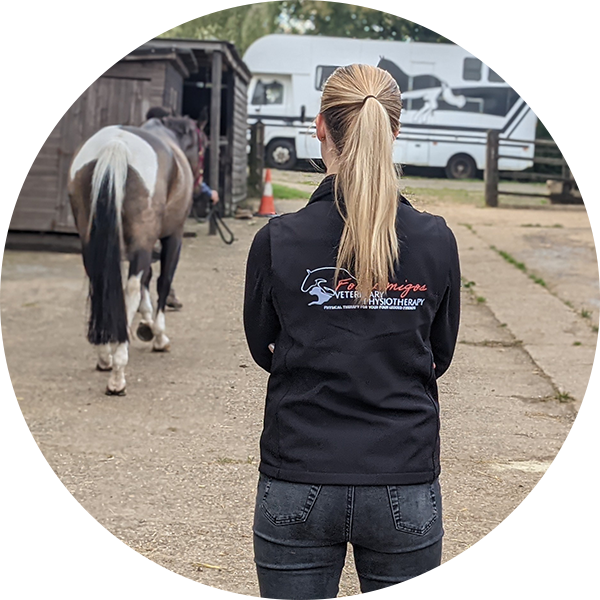Lameness is a gait abnormality, a type of asymmetrical movement caused by structural or functional issues of the locomotor system. It is usually a symptom, and a manifestation of pain.
1) Check for heat and a pulse or any sign of obvious injury to a limb
Forelimb lameness
2) A forelimb lameness can be identified by a head nod. The saying is “down on sound”, as the horse will nod their head down on to the opposite forelimb that isn’t lame to put their weight on it, reducing weight on the lame limb. e.g. head goes down on right fore, left fore is lame.
3) Bilateral forelimb lameness (both forelimbs) cannot be seen with a head nod unless using a circle, so instead look at how much their forelimbs protract (extend in front of them during movement), as this will reduce when both forelimbs are lame, as they want to reduce their stance time (time spent on the lame limb), resulting in an obvious choppier gait than normal, and usually their head will be thrown up!
Hindlimb lameness
4) A hind limb lameness is more difficult to detect due to the swaying mechanism of the pelvis. Watch the horse trotting away from you, and the lame leg usually has more movement at the tuber coxae (“hip”). This will sometimes manifest as a “hike”, sometimes just more movement in general as it is less stable. Either way, just look for an asymmetry!
How to make it easier to detect
5) If you are struggling to detect lameness use slow motion video on your phone and record your horse. This can also be sent to your vet or physio for assistance.
6) Putting the horse on a circle (lungeing), often shows up a lameness more easily as it creates torsion and uneven limb loading. Additionally if the lameness is higher up, it will generally be harder for the horse when the limb is on the outside having to swing round more, if it is lower down like hoof, it usually shows up more when that limb is on the inside weightbearing more.
7) If you feel they are “not quite right” when ridden, but seem fine trotting up, slow mo video your ridden session! It may be because the pain is in their back that they seem fine without a rider on, so being thorough is key!
How do injury/underlying conditions change things?
8) If the horse looks lame on one limb, but you feel a stronger pulse in their opposite limb, or the opposite limb’s hoof is starting to “splay” more, it is usually because the sound limb has taken more weight to allow pressure relief of the lame limb.
9) A horse with arthritis will often get better as they move more, and you will think they have warmed up out of it. This is because as the joint moves synovial fluid which lubricates the affected joint can move and take some of the “rubbing” pain away. Additionally they will appear sounder on soft ground like a school surface as concussion is reduced, and be lamer on hard ground.
10) A horse with soft tissue pain will often get worse as they move and will often be lamer on a soft surface as they try to use the soft tissue to stabilise against the uneven surface.
More help?
If you would like to train your eye and get even more handy hints with what to look for, check out my youtube video! https://youtu.be/l8OpnNVPzKI

